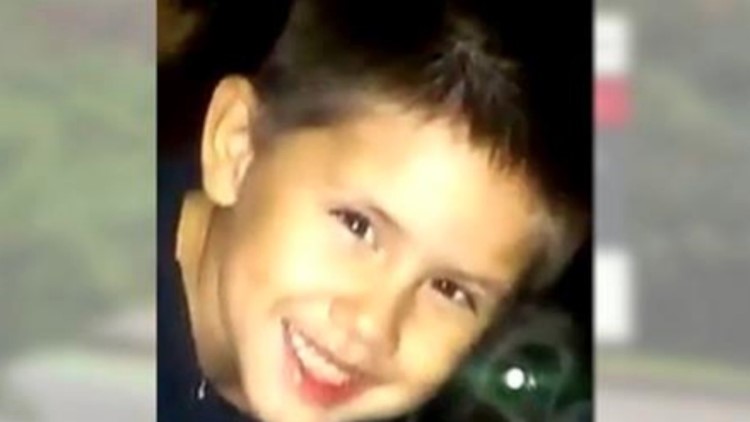The death of 6-year-old Daniel Ramirez on Sunday is the very first to be linked to a mysterious illness cropping up across the country.
Daniel’s parents, Marijo De Guzman and Jose Ramirez of Washington state, said they first took their son to the hospital because he had symptoms of a cold and was feeling dizzy. Soon, he was also drooling, incontinent, slurring his speech and suffering pain in his leg.
As the virus attacked his brain, a team of doctors – some neurologists, others specializing in infectious disease – tried to find out what was going on. Just hours after arriving at the hospital, Ramirez was paralyzed, according to KOMO.
State officials are investigating a “potential cluster” of acute flaccid myelitis, a highly infectious polio-like disease that primarily strikes children. Like polio, AFM affects the body’s nervous system — specifically the spinal cord — and can cause lifelong paralysis. But unlike with polio, there is no vaccine.
Though doctors suspect that Daniel had AFM, a spokeswoman for the Washington State Department of Health said an official diagnosis has not been confirmed.
Eight other cases are under investigation in Washington: Two have been confirmed as AFM, and seven are still being evaluated.
Five children have been treated at hospitals and released, while three remain hospitalized, according to a spokeswoman for Seattle Children’s Hospital.
Citing confidentiality, neither the health department nor the hospital would say whether the two confirmed cases are among the patients who remain hospitalized.
On Tuesday, the US Centers for Disease Control and Prevention released the national AFM case count from September, which indicates a sharp increase in the confirmed cases this year. From January 1 to September 30, 89 people in 33 states were diagnosed with AFM, 37 of them in September.
AFM cases first spiked in August 2014. By the end of that year, 120 people had been diagnosed in 34 states. In 2015, 21 people were diagnosed in 16 states.
The exact cause of the illness is unknown, though scientists think it is most likely the result of a viral infection. Other potential culprits include environmental toxins, genetic disorders and Guillain-Barré syndrome, according to the CDC. AFM itself is not contagious.
What is acute flaccid myelitis?
“This is a very rare condition, but I think it’s important that we take it seriously, because it does have long-term and potentially disabling consequences,” said Dr. Kevin Messacar, a pediatric infectious disease physician and researcher at Children’s Hospital Colorado.
“The key with AFM is that it’s sudden onset,” said Dr. Manisha Patel, AFM team lead at the CDC and a practicing pediatrician. “Symptoms include limb weakness, facial drooping and difficulty swallowing and talking.
“AFM is an illness that can be seen with a variety of different causes. The most famous one is polio, but there are also enteroviruses, which are circulating very broadly in the US and other countries.”
Sure enough, when the initial cases of AFM were reported in 2014, many doctors believed it was linked to an outbreak of enterovirus D68, a respiratory virus that sent hundreds of children to the hospital.
“What we saw … is that the majority of children had a fever and a respiratory illness,” said Messacar. “Five days later, they would develop pain in the arms and legs, and weakness followed.”
Messacar and his colleagues have followed their hospital’s 12 AFM patients since 2014. Most are doing better than when they first came into the emergency room, but the majority continue to have some level of disability.
“It’s important to understand that there’s a wide spectrum of severity of this disease,” Messacar said. On one end, you see mild weakness in one extremity, he said. On the other, you’ve got children who have lost the ability to breathe on their own and exhibit complete paralysis in their arms and legs.
Patel and Messacar agree: There are no known proven, effective therapies. Both doctors stress the importance of recognizing the early signs of AFM and seeking care as soon as possible.
“A doctor can tell the difference between AFM and other diseases with a careful examination of the nervous system, looking at the location of the weakness, muscle tone and reflexes,” according to the CDC’s website. “Magnetic resonance imaging (MRI) can be very helpful in diagnosing cases of AFM.
“Finally, by testing the cerebrospinal fluid (CSF, the fluid bathing the brain and spinal cord), clinicians can look for findings suggestive of AFM,” according to the CDC.
How worried should you be?
“CDC is always concerned when there is a serious illness that is affecting the public, especially when it’s affecting children,” Patel said. “We’re looking closely at what might be causing this and what might put someone at risk for AFM.”
In the meantime, Patel encourages practicing “general prevention strategies”: washing your hands with soap and water, getting vaccinated and preventing mosquito bites.
AFM has also been liked to West Nile virus and other viruses in that family, according to the CDC: in particular, Japanese encephalitis and St. Louis encephalitis. No link has been established between AFM and the Zika virus.
There is some good news, however. “Enteroviruses tend to appear in the late summer and early fall and go away in the winter,” Messacar said. “So we expect to see (AFM cases) decrease based on the epidemiology of enteroviruses.
“We understand this condition better than we did in 2014, but there’s still a lot to learn,” he said. “The process is slow, but progress is being made.”



